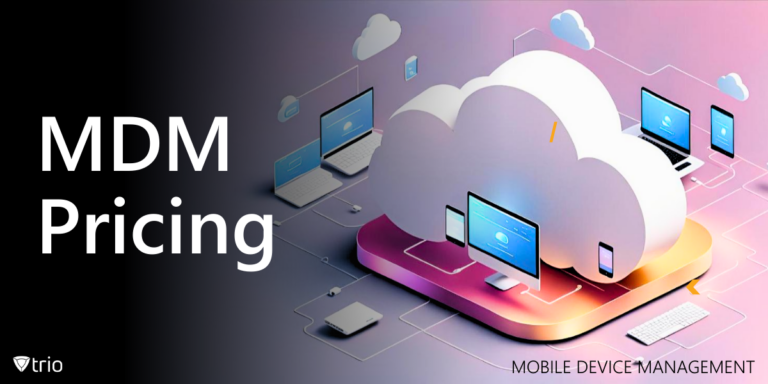Embarking on a journey with a new hire is akin to setting sail on uncharted waters. The initial steps taken during a new hire onboarding can significantly influence the course of the voyage, and science can back us up on that. According to SHRM (the Society for Human Resource Management), strong onboarding can result in a 50% higher new hire productivity in the first six months, and if the onboarding is structured correctly, they will also be 82% more likely to work for the company for the first year. These statistics underscore the pivotal role of onboarding in shaping the success and longevity of new employee tenures. In this blog post, we delve into the art and science of maximizing the potential of new hire onboarding, including insights into employee management strategies that foster growth and retention.
Why Does New Hire Onboarding Matter?
A smooth onboarding process for new hires matters for organizations for several reasons:
-
First Impressions
The onboarding process sets the tone for the new employee’s experience with the organization. A well-structured and welcoming onboarding process helps create a positive first impression, which can contribute to higher employee engagement and retention.
-
Faster Integration
Effective onboarding helps new hires acclimate to their roles, team dynamics, and organizational culture more quickly. This can lead to increased productivity and effectiveness, as new employees are better equipped to contribute to their teams sooner.
-
Reduced Turnover
Proper onboarding can help reduce turnover by ensuring that new hires feel supported, valued, and connected to the organization from the start. When employees feel engaged and integrated into the company culture, they are more likely to stay with the organization for the long term.
-
Alignment with Goals and Expectations
Onboarding provides an opportunity to align new hires with the organization’s mission, values, and goals. Clear communication of expectations and objectives during the onboarding process helps set employees up for success and ensures that everyone is working towards the same objectives.
-
Building Relationships
Onboarding facilitates relationship-building between new employees and their colleagues, managers, and other stakeholders. Strong relationships within the organization can foster collaboration, teamwork, and a sense of belonging, which are essential for employee satisfaction and retention.
-
Compliance and Training
Onboarding is an opportunity to ensure that new hires understand important policies, procedures, and compliance requirements. It also provides an opportunity to deliver any necessary training or skill development to help new employees succeed in their roles.

IT Department’s Employee Onboarding Checklist for New Hires
When onboarding a new hire, the IT department plays a crucial role in ensuring the smooth integration of the new employee into the organization’s technological ecosystem. Here are some key responsibilities for the IT department during the new hire’s onboarding process, including gathering onboarding feedback.
-
Provisioning Hardware and Software
The IT department should ensure that the new hire has all the necessary hardware, such as a computer, laptop, or mobile device, as well as any required peripherals (e.g., monitor, keyboard, mouse). They should also provision software and applications relevant to the employee’s role, ensuring they have access to the tools they need to perform their job effectively.
-
Setting Up User Accounts and Access
Set up necessary accounts, access permissions, and security protocols for the employee to start working effectively. Using onboarding software can make this step and the whole onboarding process a breeze for the HR and IT departments. When choosing a new hire onboarding software, an organization should consider:
- User-Friendliness: Ensure the software is easy to use for both administrators and new hires.
- Customization: Look for software that allows customization to fit the organization’s unique onboarding process and branding.
- Integration: Choose software that integrates seamlessly with existing HR systems, such as payroll and performance management.
- Mobile Accessibility: Opt for software that is accessible on mobile devices to accommodate remote or on-the-go employees.
- Compliance: Ensure the software helps in compliance with legal and regulatory requirements, such as collecting necessary documentation and ensuring data security.
- Analytics and Reporting: Select software that provides analytics and reporting features to track onboarding progress and measure effectiveness.

-
Network and System Access
The IT department should provide the new hire with access to the organization’s network and internal systems, including shared drives, databases, and communication platforms. They should also ensure that the employee understands any security protocols or restrictions in place to protect sensitive information.
-
Training and Support
IT should offer training and support to help the new hires familiarize themselves with the organization’s technology infrastructure. This may include providing guidance on how to use specific software applications, accessing internal resources, troubleshooting common issues, and adhering to security best practices.
-
Security Measures
IT should implement security measures to safeguard the organization’s data and systems. This may involve setting up encryption, firewalls, antivirus software, and other security protocols on the new hire’s devices. They should also educate the employees on security policies and procedures to mitigate potential risks, such as phishing attacks or data breaches.
-
Troubleshooting and Assistance
Throughout the onboarding process, IT should be readily available to assist the new hire with any technical issues or questions they may encounter. They should provide responsive support to address concerns promptly and ensure a positive experience for the employee.
The IT department’s use of onboarding software should be coupled with a Mobile Device Management (MDM) solution that can manage all devices that have been provisioned alongside the policies, apps, and security measures each department must consider. In fact, an MDM solution can be used to streamline and automate many of the steps the IT department has to take on a new hire’s onboarding day or week.
Conclusion
Effective onboarding is not just a formality but a strategic investment in the future of the organization. By recognizing the significance of onboarding and implementing best practices, organizations can set their new hires up for success from day one. From fostering positive first impressions to ensuring compliance and facilitating relationship-building, each aspect of the onboarding process plays a crucial role in shaping employee engagement, productivity, and retention. Remote Employee Onboarding is particularly vital in today’s digital landscape, where remote work is increasingly common.
See Trio in Action: Get Your Free Trial Now!
Onboarding can be streamlined significantly with the use of an MDM solution. Use Trio to integrate your onboarding software with your organization’s policies and manage device provisioning seamlessly. With Trio, you can centrally manage and secure mobile devices, enforce policies, and streamline app deployment, all while safeguarding sensitive data. Onboarding and offboarding have never been easier. Take the next step in optimizing your organization’s operations by using Trio’s free demo today.
Get Ahead of the Curve
Every organization today needs a solution to automate time-consuming tasks and strengthen security.
Without the right tools, manual processes drain resources and leave gaps in protection. Trio MDM is designed to solve this problem, automating key tasks, boosting security, and ensuring compliance with ease.
Don't let inefficiencies hold you back. Learn how Trio MDM can revolutionize your IT operations or request a free trial today!




